BEGALILEO
After school math learning app for Kids and Parents
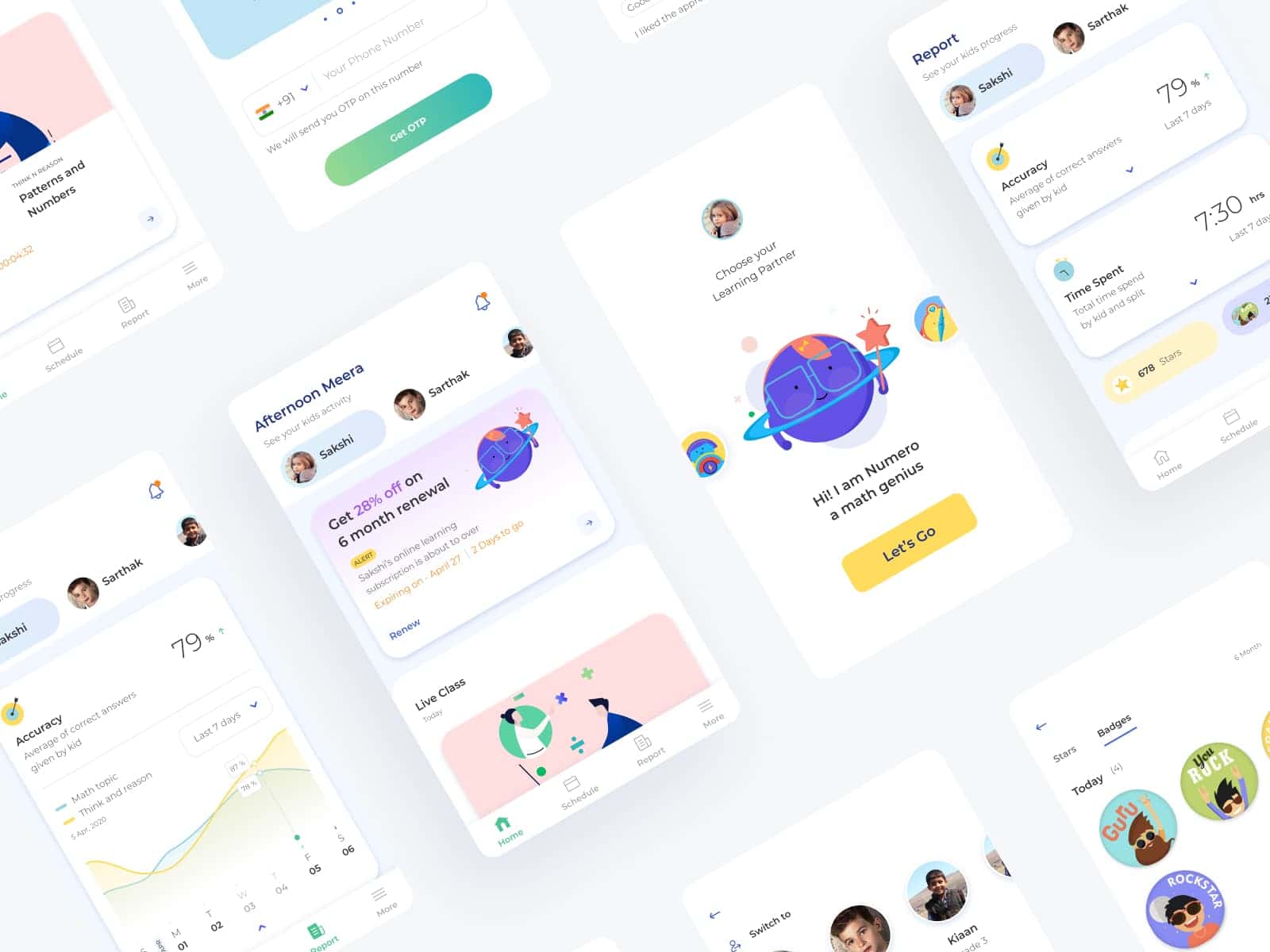
beGalileo is a mathematical thinking program for children aged 3-14 years. The program helps build confidence, improve problem-solving, enhances brain function, and boosts critical thinking. It also helps parents get a comprehensive insight into a child’s learning journey through online and on-demand reports.
Team
Amarsingh Bhagat, Umang Dedhia
Role
My responsibilities included defining scope, managing project, user research, ideating concepts, wireframing, iterating on feedback, designing system, creating prototypes, coordinating with developers
Methods Used
Competitive & Comparative Analysis, Business Analysis, User Persona, User Flow, Site Map, System Design, Information Architecture, UI/UX Design, Prototyping, and Iterating, Usability Testing
Tools
Draw.io, Figma, Asana, Adobe Suit, Google Suite
Challenge
Help increase conversions and user retention by expanding beGalileo's math program offerings for Children and their parents beyond offline learning centers.
Solution
We designed an app that offers begalileo's personalised math program to parents and children remotely in a playful manner.
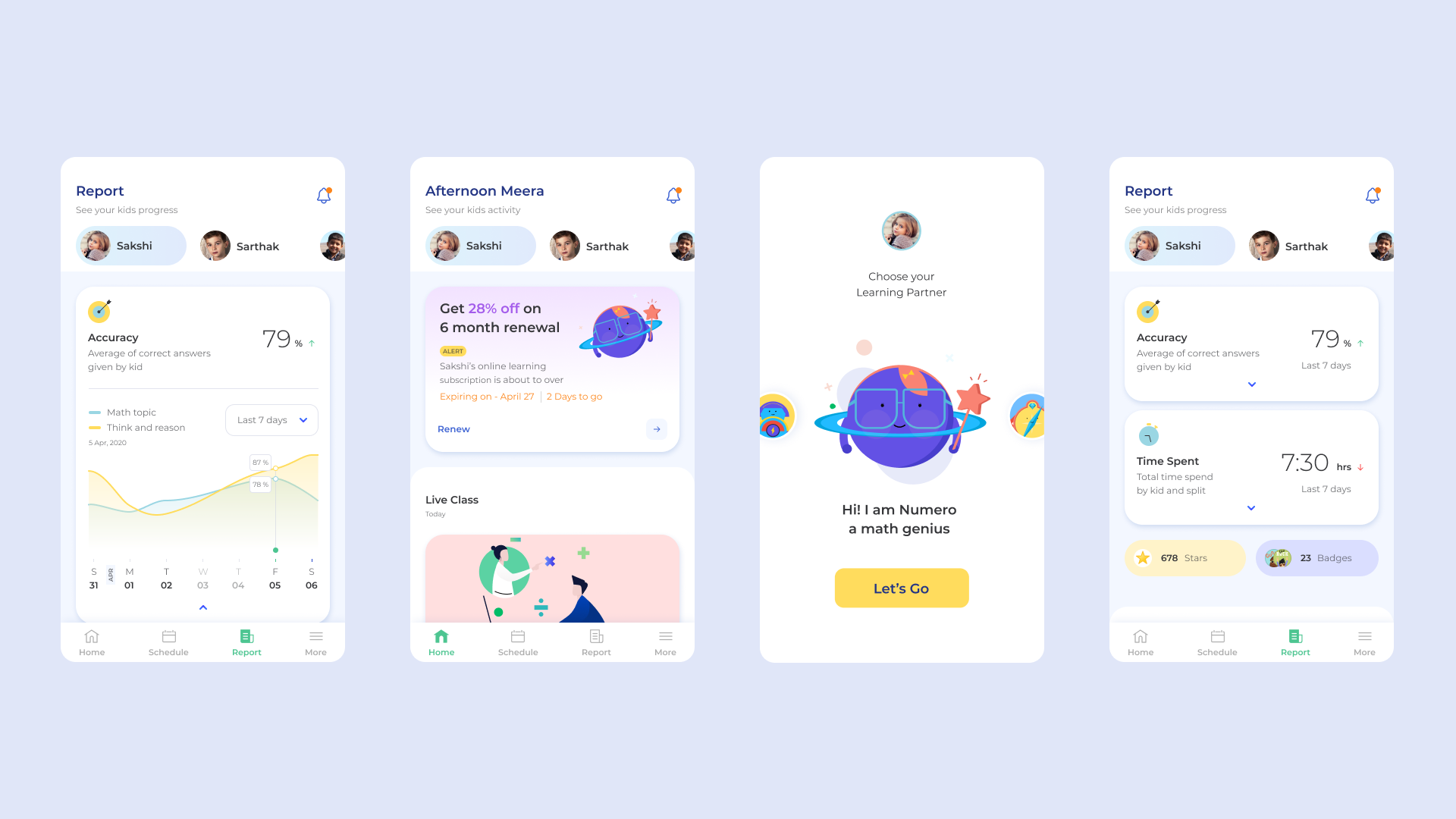
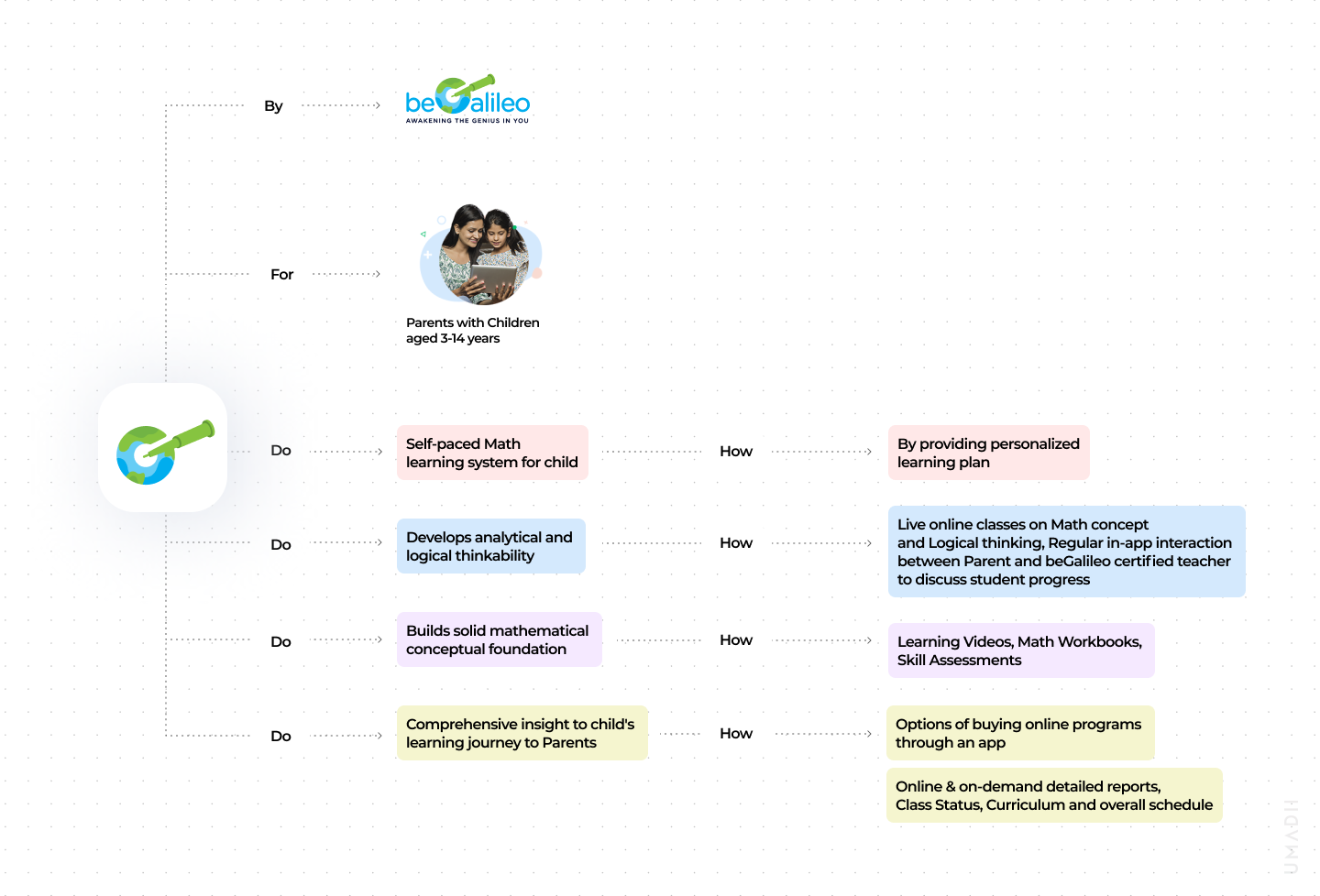
For Children
To enhance creativity and boost critical thinking, we kept the interface and overall experience playful and rewarding for children to be open to learning and growing in an encouraging manner
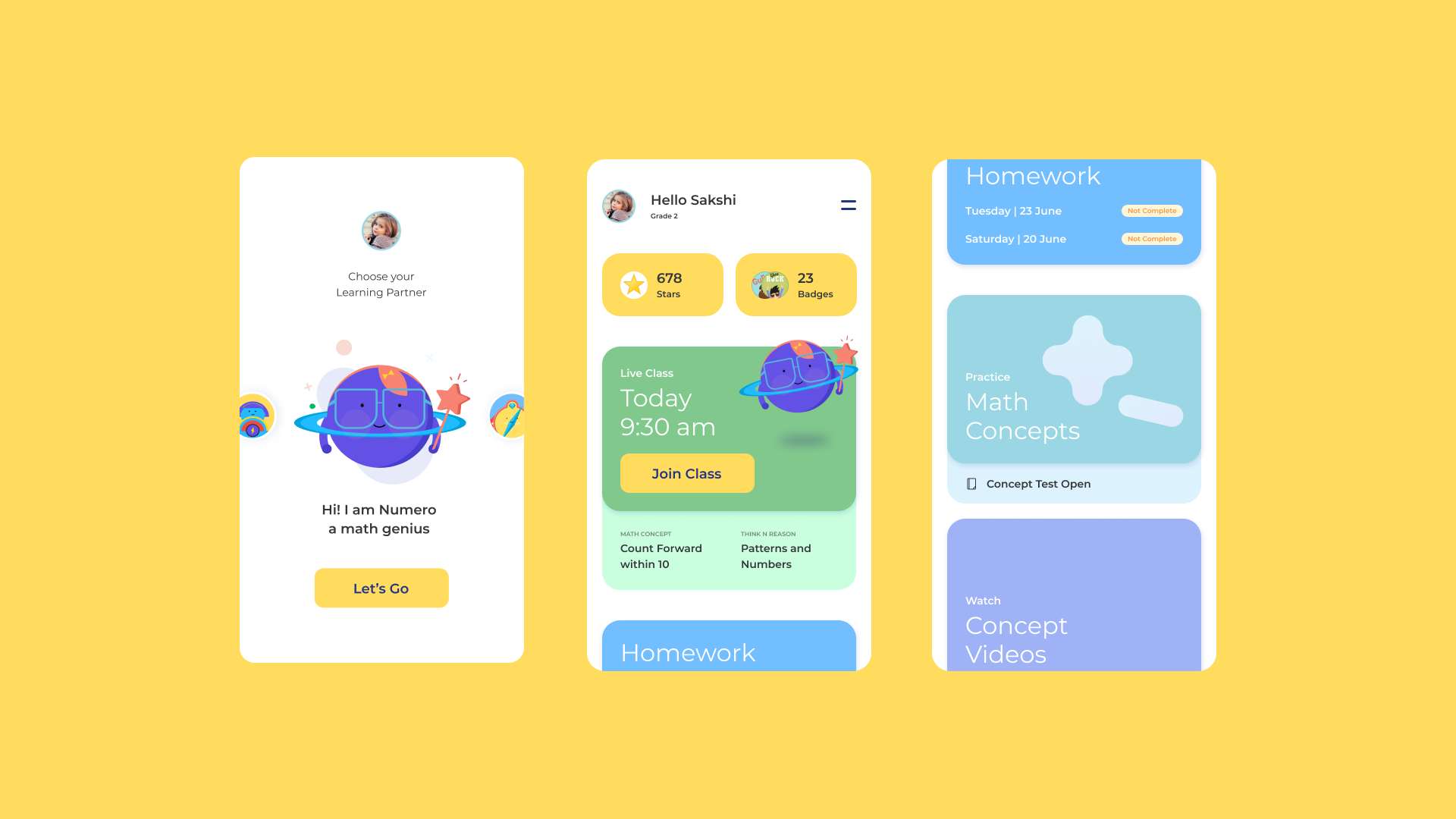
We designed the characters for the app which will help children learn new lessons and concepts in a fun way. These characters act as guides within the app, to cheer them up while giving the answer be it correct or incorrect. These characters have unique personalities and a child can select any of them from the beginning.
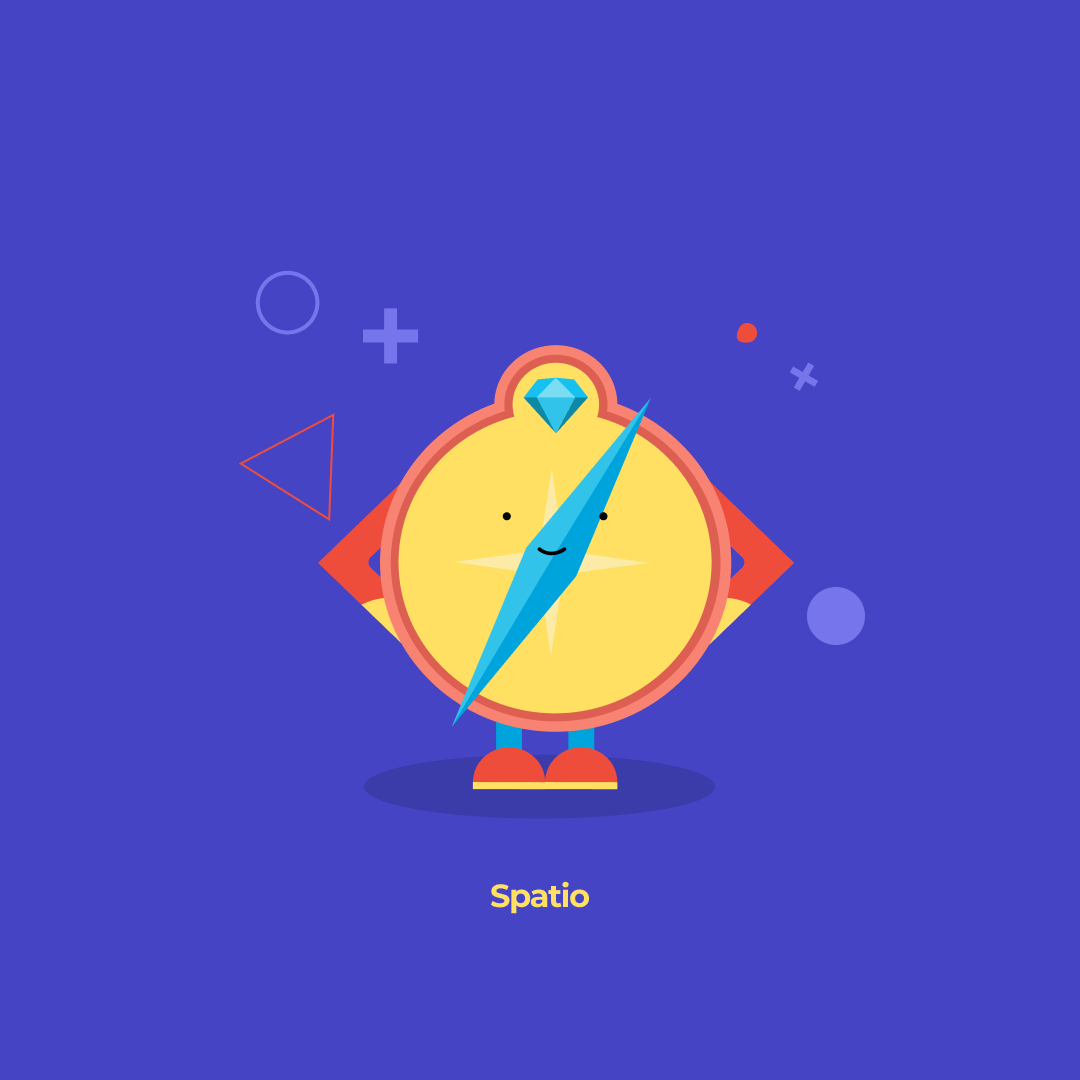
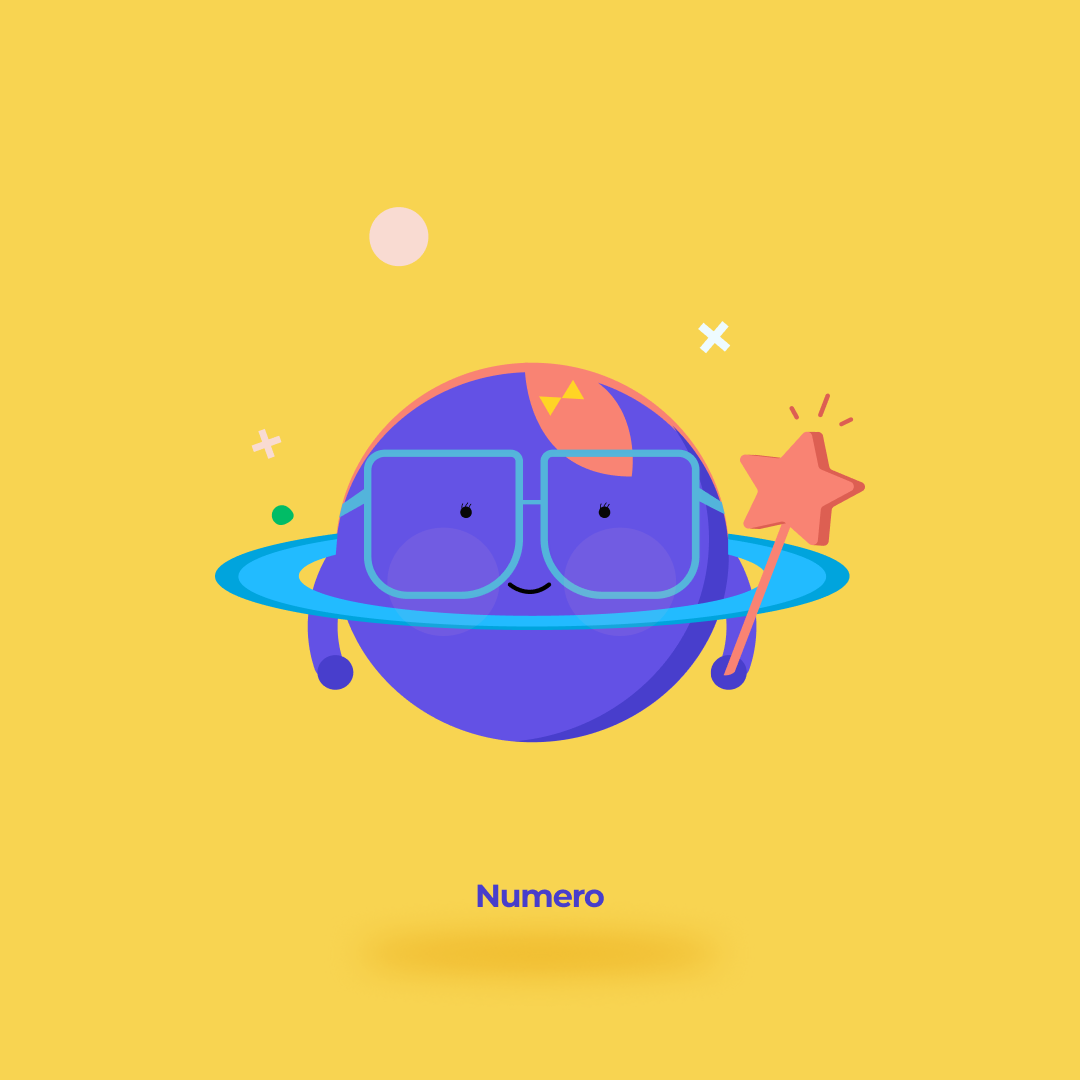
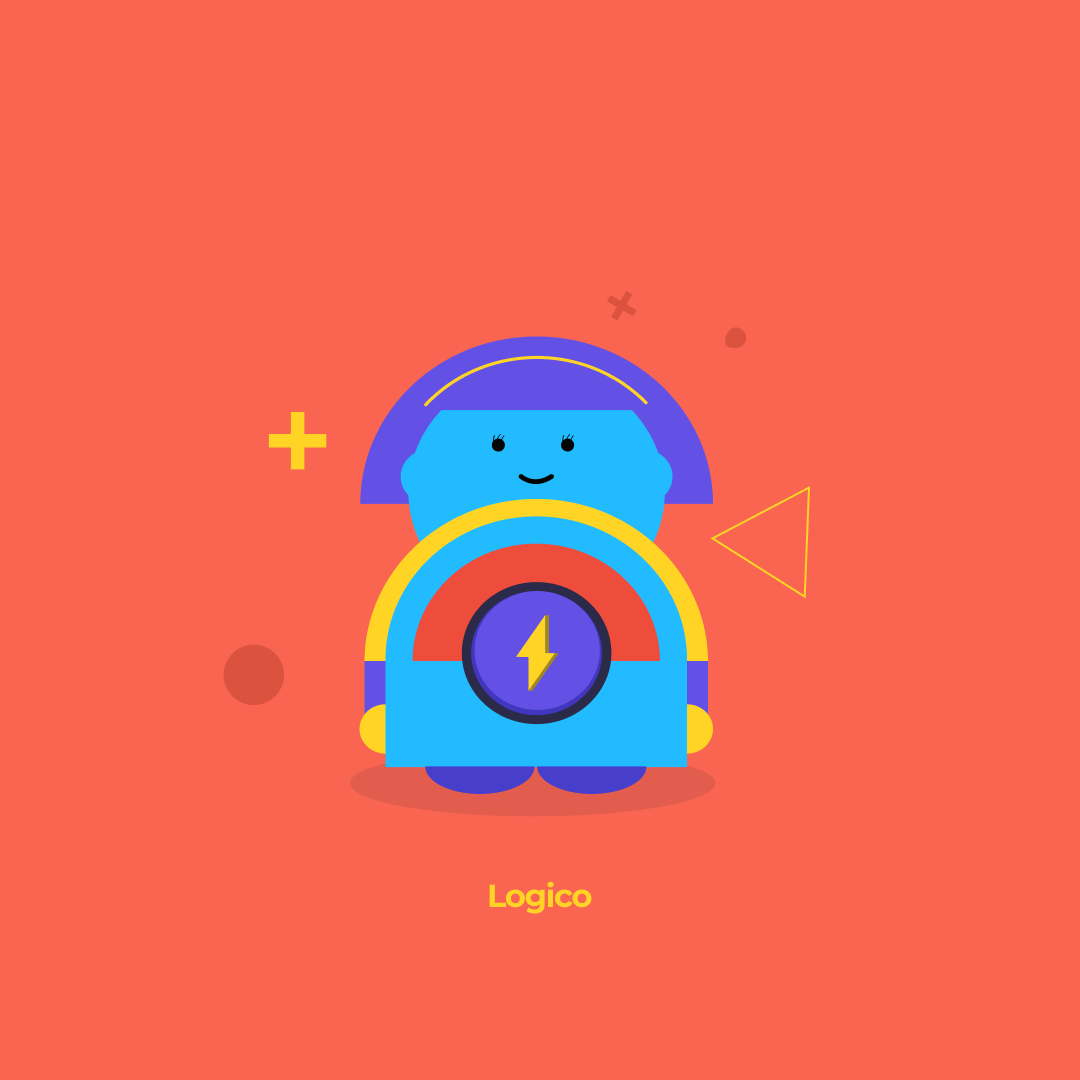
To create an encouraging and supportive environment for children, we introduced rewards with stars and interesting badges. This would help a child stay motivated and improve the lesson learning in an effective way. A child earns stars from teachers for the behavior and from math lessons and videos. The badges are earned by completing simple tasks on the app.
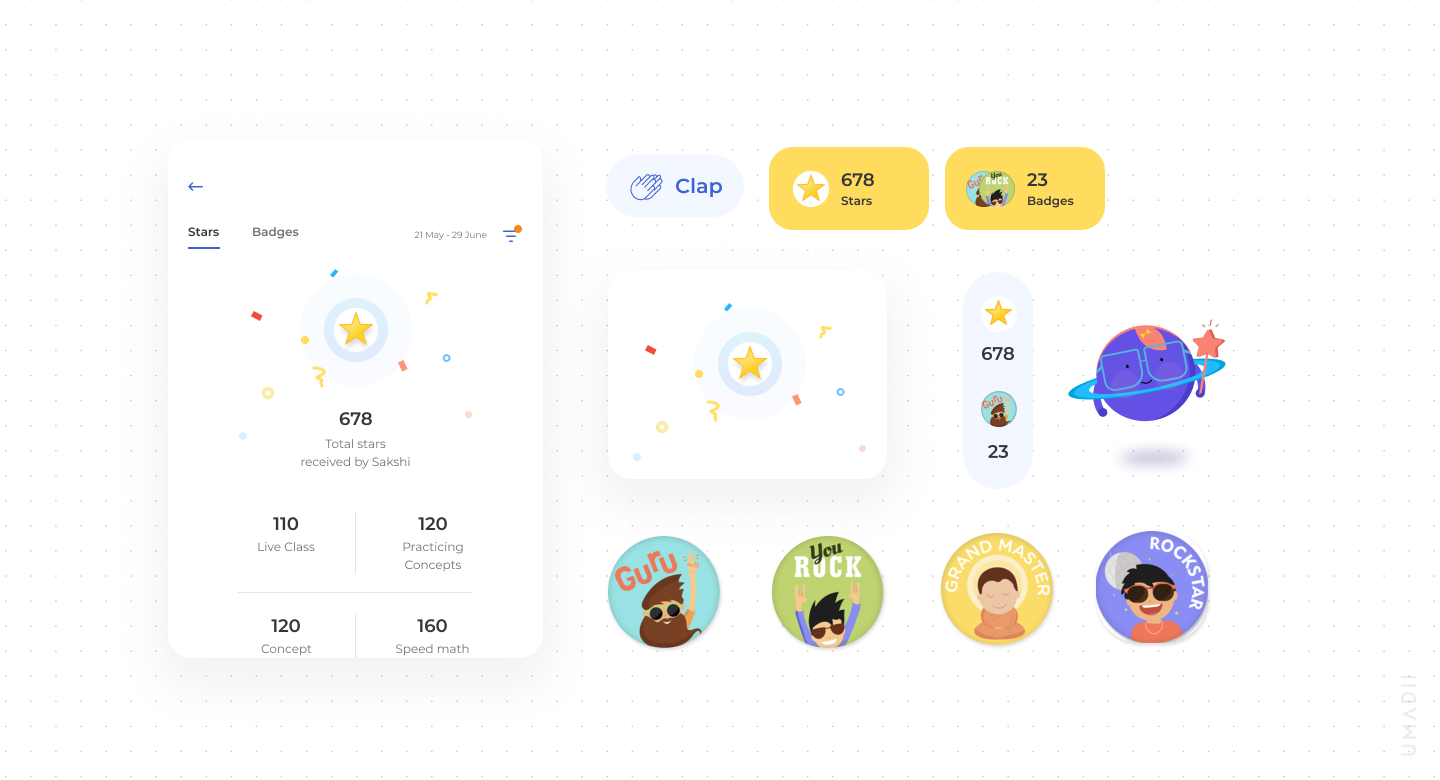
For Parents
From onboarding to viewing reports, we wanted to keep the interface simple and easy. Parents could add a child to track the learning activities, buy the math program within the app, view detailed reports, and know the schedule.
Easy Sign-up
Based on our research on persona and discussion with the client, we knew the target groups we are catering to are young parents who are working professionals and want their children to get the best education. That leads us to keep the signup and adding a child process simple and fast so that they can get started quickly.
Buying a math program
for kids
Parents sometimes hesitate to buy anything for a child unless they try or see them practically and hence we wanted to prioritize 'Book a free demo' for a child, showing free speed math game and learning videos section on the homepage and let parents get the overall sense of a class and program before buying. Parents can view the entire curriculum, know the details about the program and classes as per individual child and go ahead with the subscription plan.
Staying connected with the child
Post getting the subscription, parents can stay connected with the child from the home. A parent can track a child's learning activity, know upcoming live class status, view the assigned homework as per each class. Teachers' contact helps them connect anytime in case of any doubts or send feedback.
What's my child's schedule?
It's very important that parents know the program schedule of each child very well. We placed the live class schedules and monthly curriculum together in one place so that parents can view upcoming, completed, and incomplete live classes and detailed curriculum to get the current status of a child. This helps them get an overview of all the activities and progress made by a child.
Reports
Reports are an important section for parents to know the progress of a child. From Accuracy to daily activity, we made reports easily accessible for parents to get that relevant information.
Research & Process
We were able to get some fine insights and learnings to define the experience for Child and Parents through initial research.

Process Overview
With the stakeholder interview, we noted lots of constraints and points parents were facing while their child was in an offline learning center. From that analysis, it became clear that our primary areas of focus should be:
1. Clear and upfront navigation
2. Program and Schedule Details
3. Real time activity reports
Target Users and Independent Research
We needed to understand who the real user is so that we could provide them with a solution that meets their needs. We conducted independent research to gain a more in-depth understanding of the user.
Here’s what we learned:
1. Parents are ambitious and aspirational for kids
2. They want to provide a high quality of education
3. Busy schedule should not impact child's study
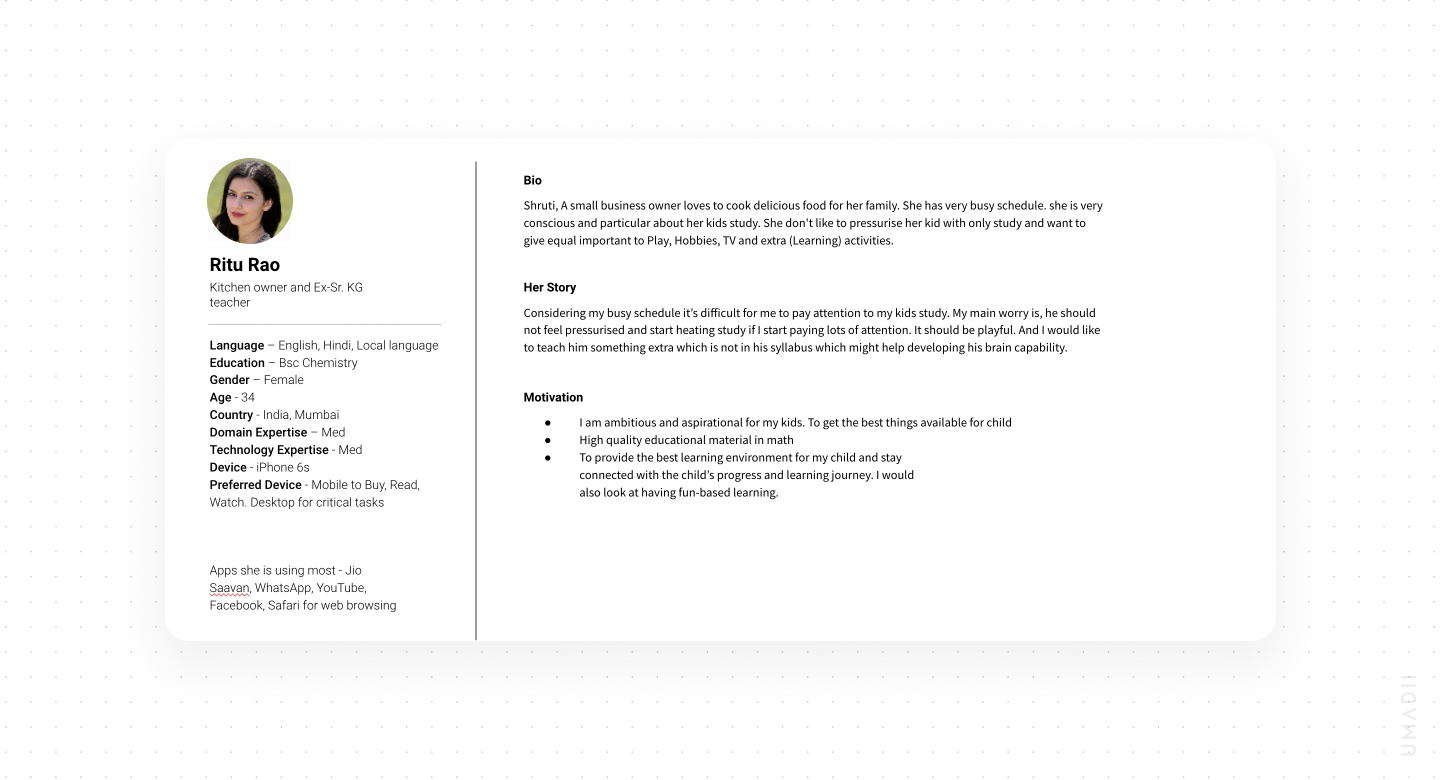
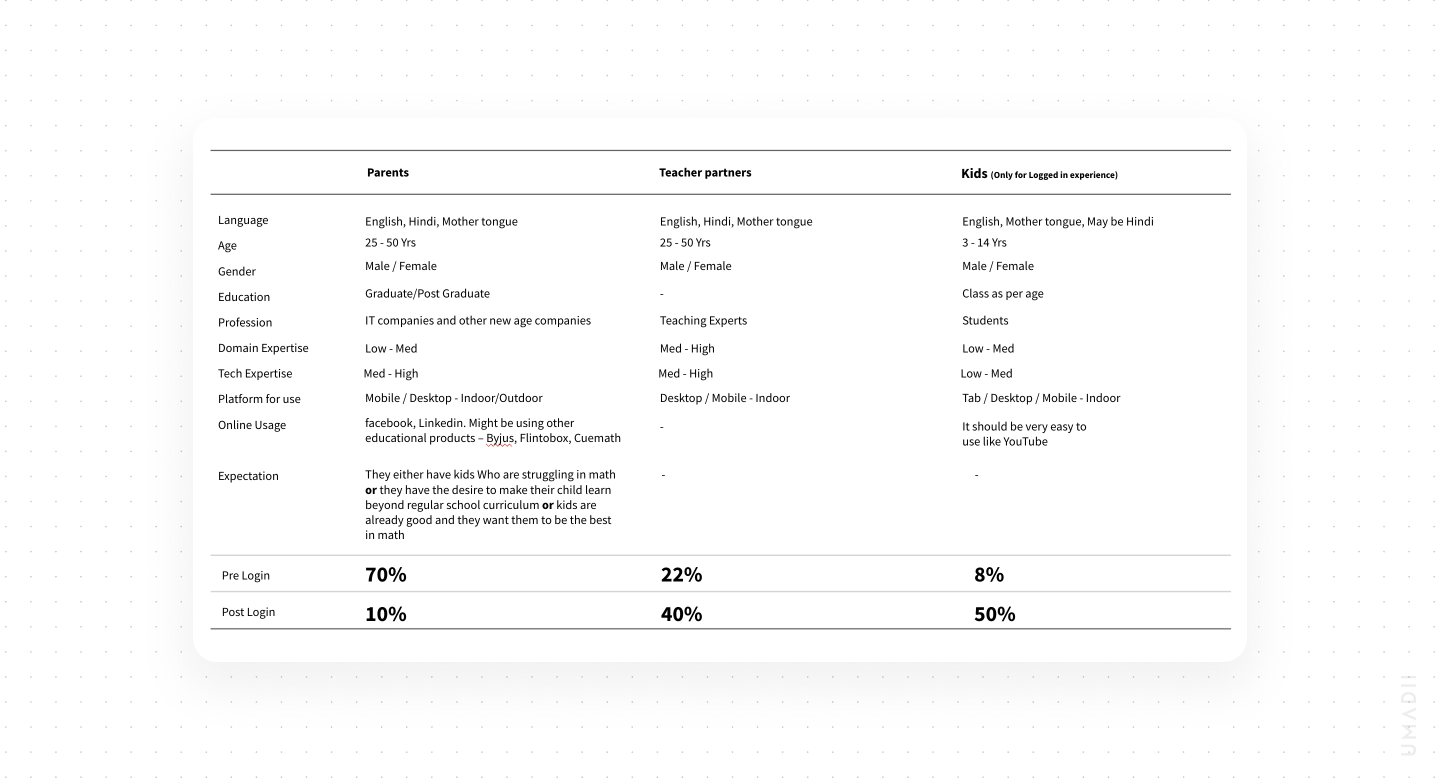
Usability Scoring
Before diving deep into ideation and wireframing, we spent some time going through direct and indirect competitors. We highlighted the proposition and gave scores based on navigation, task orientation, interactivity etc. This helped us gain market insights and improve our concept and structure.
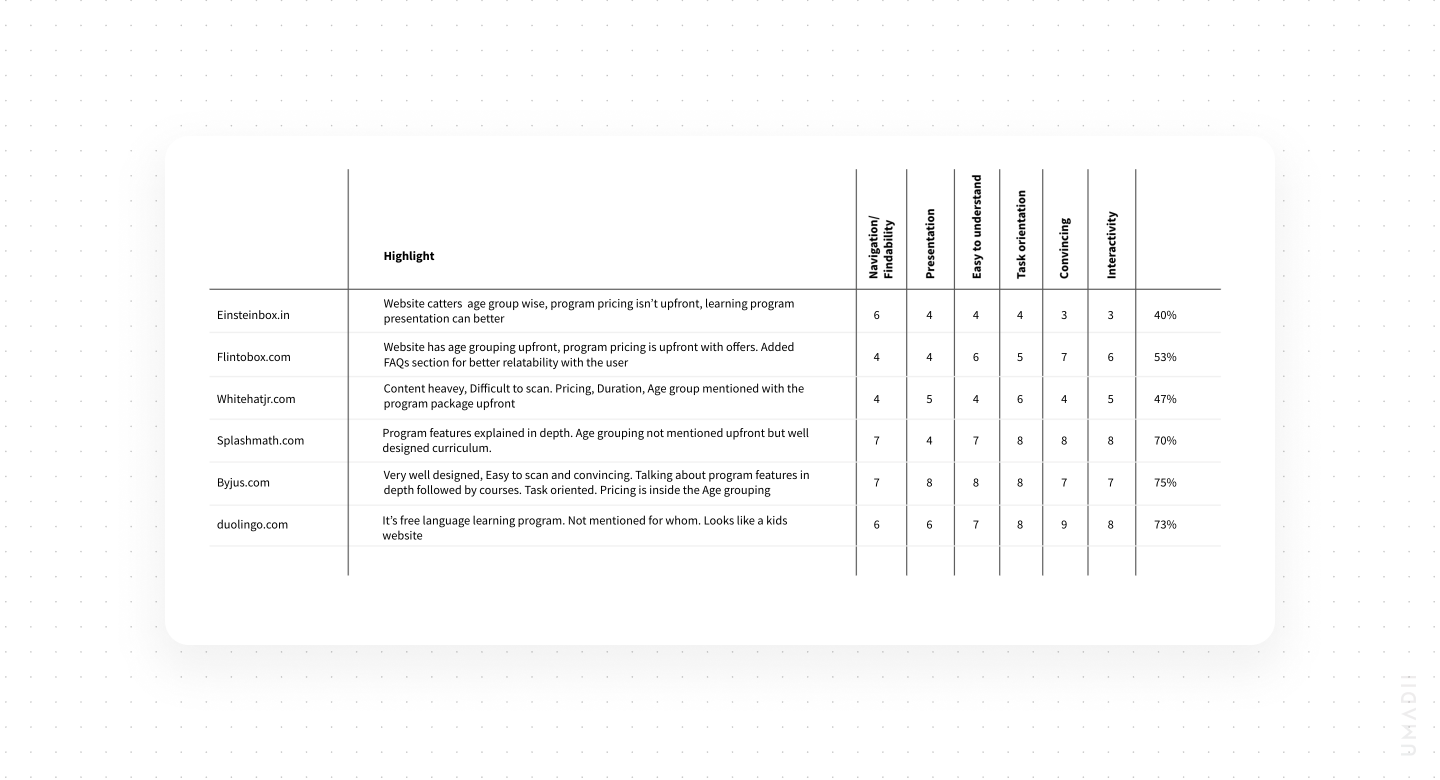
Initial Sketches and Information Architecture
With target user study and market insights, we initiated paper sketches and created information architecture.
Key Takeaways
1. Keep parents informed about daily activities
2. Show math program details clearly and upfront
3. Let parents know each child's progress status easily
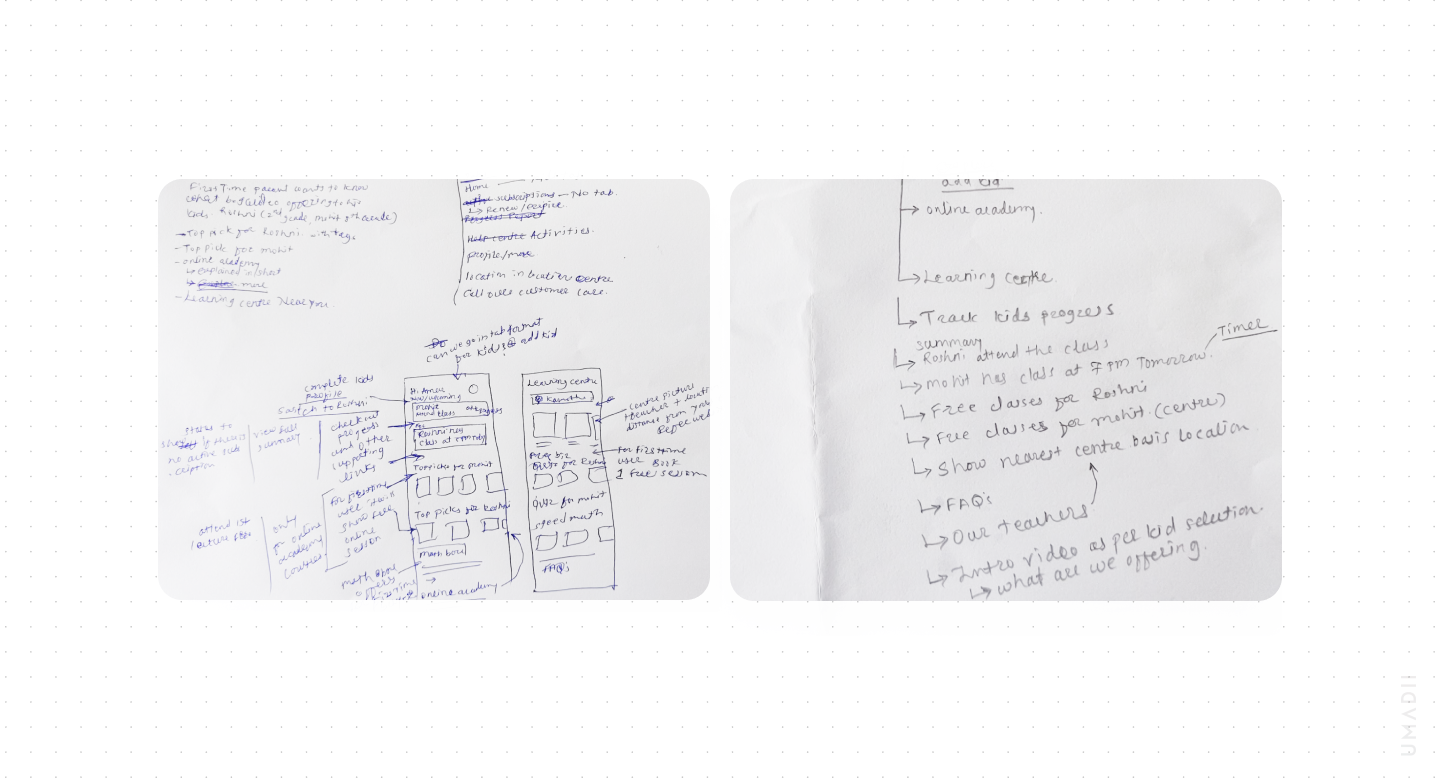
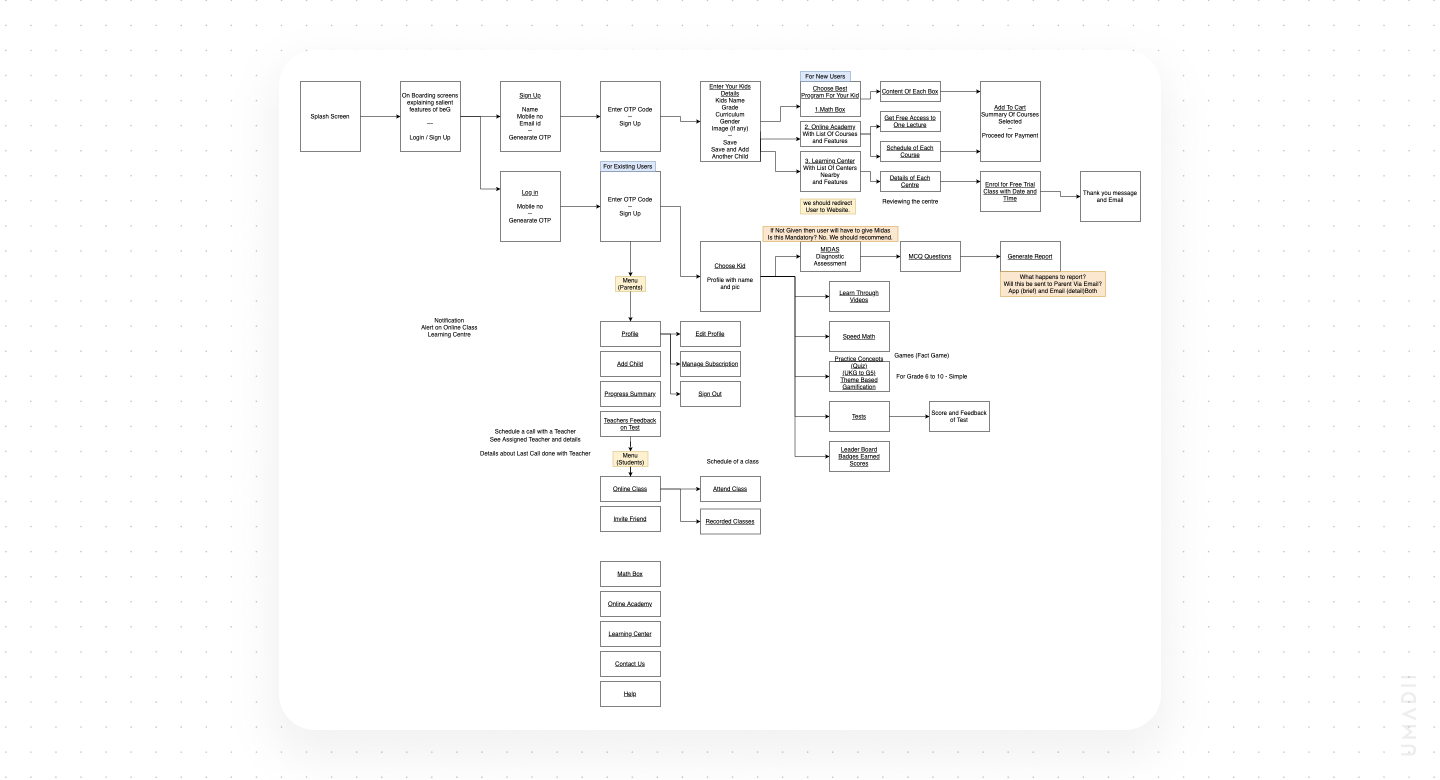
Improvements & Prototyping
We iterated 3 times on our solution. The goals of each round were to refine the flows and then test the prototype with refined flows.
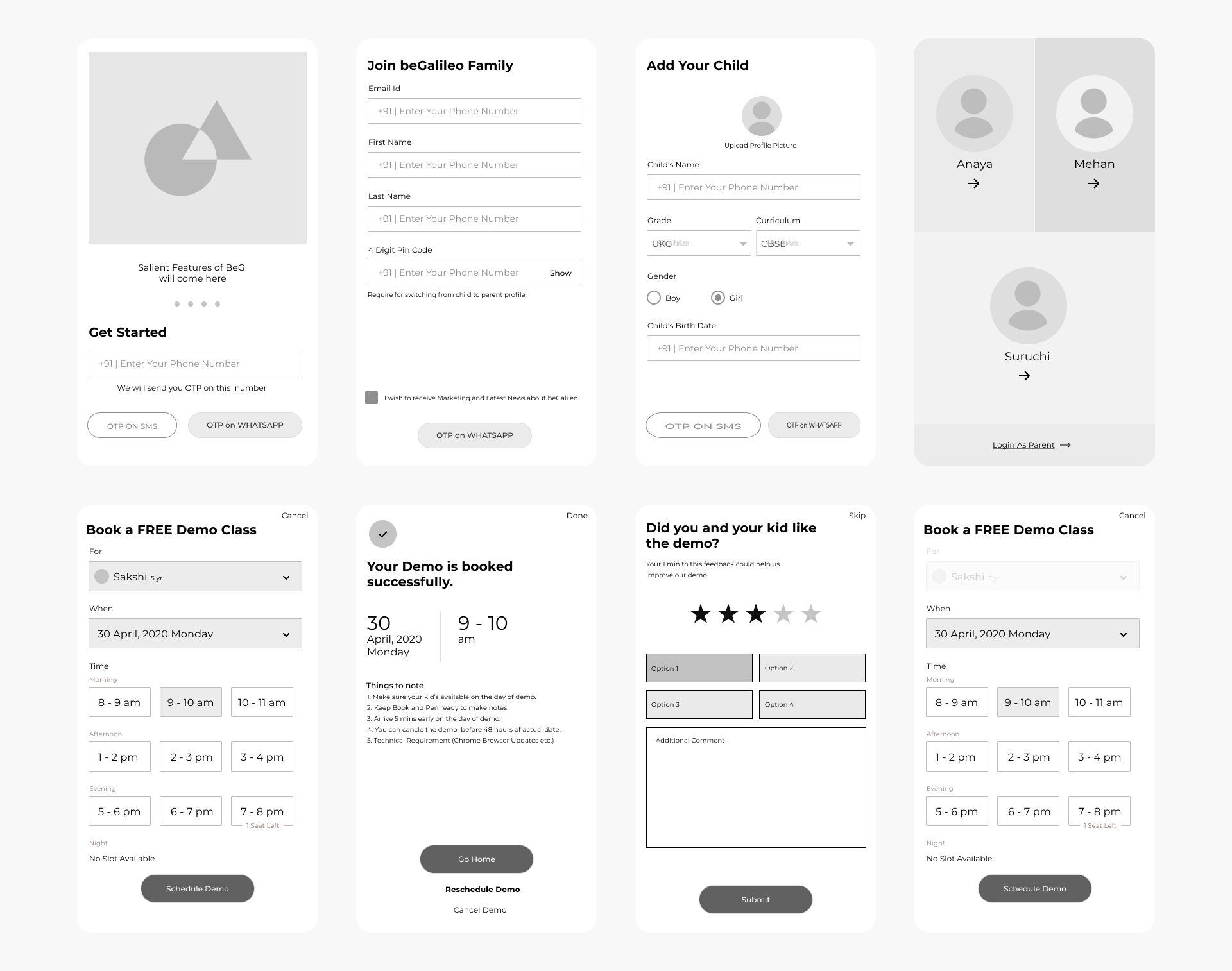
Mid-fidelity Wireframes
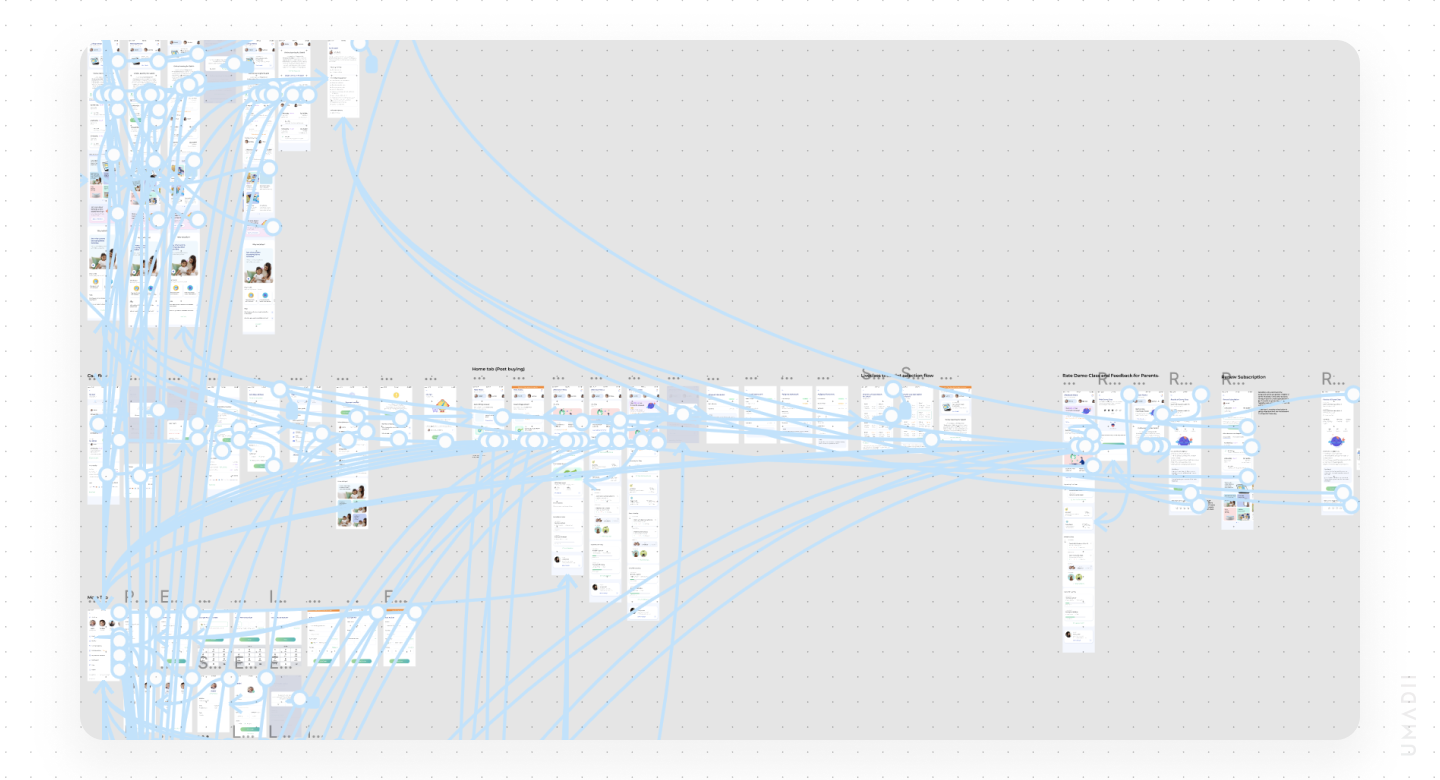
That's how we protyped the app on Figma
Metrics & Next Steps
Metrics
Here are 5 metrics that should be tracked to measure how well our solution helps beGalileo increase positive impact:
1. The average time parents visit an app and check the daily activity
2. Tracking the behaviour of child while practicing maths and watching videos
3. The number of people that reached the final screen for purchasing the plan
4. Income generated from the app through subscription plans every month
5. Tracking the monthly active users
Next Steps
An app for Teachers
Along with a website, creating an app for teachers which includes hosting live class, creating assignments and updating reports in real time.
Integrating Workshops and other topics
Create interesting onsite and online workshops for kids to interact with other children and improve on skills.
Adding other interesting topics for kids could be a potential next step to improve user retention.
© Copyrights Umadii 2024
